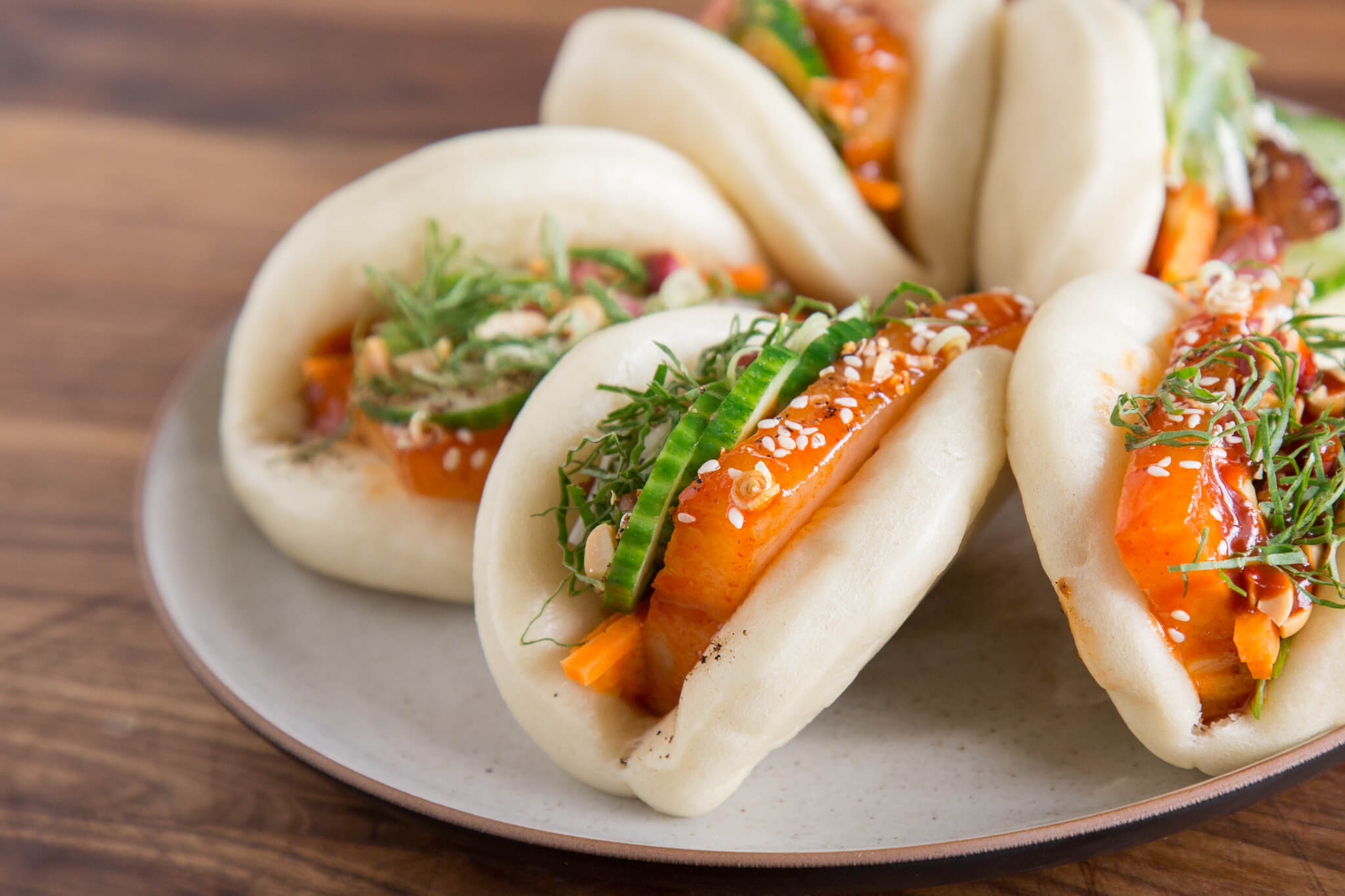
ChefSteps Steamed Buns
Ingredients for servings
-
40 g butter + 50g lard
-
330 g milk, whole, just above room temp
-
15 g yeast
-
720 g 00 flour
-
70 g sugar, granulated
-
10 g salt
-
7 g baking soda
-
7 g baking powder
Directions
In a pot on the stove, melt butter over low heat. Don’t let it get too hot — about 41 °C is a good target temperature. You can also microwave it — your call. If you add yeast to butter or milk that’s above 46 °C, your dough may not rise properly, because you risk killing the yeast. So if your butter gets too hot, let it cool a bit before moving on.
In the bowl of a stand mixer, combine milk, melted butter, and active dry yeast. Whisk to dissolve the yeast.
Sift the dry ingredients over a medium-sized bowl, then give the mixture a quick stir with a whisk to fully incorporate.
Attach the dough hook to your stand mixer, and begin mixing on low. Slowly add the dry ingredients, one spoonful at a time.
Mix for 10 minutes.
Remove the dough from the bowl, form into a ball, and set aside. Lightly grease the bottom of the mixing bowl with nonstick spray, then return the dough to the bowl and cover with plastic wrap. Allow the dough to proof at room temperature until it doubles in size — about one hour. There are two methods to shaping out the buns.
Roll out dough onto a clean work surface until it’s about a quarter-inch (6 mm) thick. Use your ring mold to make small indents in the dough, then use those to guide you as you punch out individual buns. Spritz buns lightly with nonstick spray to prevent the sides from sticking together. Fold each bun over into a semicircle, pinching gently where the edges meet. With your rolling pin, roll buns—again, gently—to flatten them slightly and smooth out the surface.
Set out a sheet pan lined with greased parchment paper. Punch the dough down and turn it onto your work surface. With a digital scale, separate dough into 50 g portions, and roll each one into a little ball. Place each portion onto the parchment paper, and keep them covered with a damp paper towel or clean kitchen towel as you work.
With your rolling pin, roll out each ball of dough into an oval about 4 inches (100 mm) long and about 2 to 3 inches (50 to 75 mm) wide. (The dough should be about a quarter-inch (6 mm) thick.) Take a look at each bun – if one side looks smoother than the other, place that better-looking side down facing the work surface—that’s going to be the side that people see. Lightly grease the side that’s facing up, then fold the bun over so that the edges meet and pinch slightly at that meeting point.
Gently roll over each bun with your rolling pin to even out the surface.
Allow buns to proof 30 more minutes if you want ’em extra fluffy. You can also proof them in your bamboo steamer.
Heat water in a wide pan on the stove until it’s boiling.
Meanwhile, lay parchment paper out on your work surface and cut out a circle to line your steamer basket. You can use the cartouche method, but keep in mind that the shape doesn’t have to be super precise—the point is to avoid forming ridges in the bottoms of your buns and to prevent them from sticking to the surface of the steamer.
Set out a sheet pan on the counter next to the stove. Carefully place steamer baskets atop the pan of boiling water and allow to steam 5–10 minutes. (It’s very hard to oversteam the buns, and it’s a bummer when they’re underdone, so err on the long side.)
Transfer steamed buns to a sheet pan. Once they’re cool, cover the sheet pan with plastic wrap or a towel until serving, or freeze them in a ziplock-style bag.